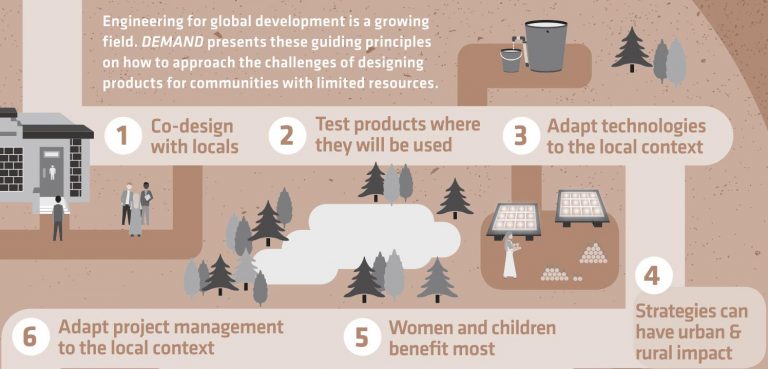Welcome to the first in a series on the principles of humanitarian engineering. These digestible essays highlight points from the textbook Humanitarian Engineering: Creating Technologies that Help People, by Kevin Passino, an electrical and computer engineering professor at The Ohio State University. This series is adapted by the author for Engineering for Change. Download Humanitarian Engineering, 3rd Edition, for free.
Principle One: Focus on People
Humanitarian engineering is the creation of technologies that help people. To ensure that your humanitarian technology development project will have a tangible and direct impact, the top-priority focus must be the people.
The people you are trying to help are unique, diverse, and fully deserving of your kind and full attention. You need to respectfully talk to the people you work with. Look them in the eye and smile. For example, while working together on a project, do not over-focus on the project tasks, but also try to make friends, and develop a relationship. Indeed, nothing happens in humanitarian engineering except on the back of a relationship.
Develop solidarity with the people and community you work with.
Develop solidarity with the people and community you work with. You want your project to be both a social and technological success; these two have strong interactions.
If there is a social failure, such as no buy-in to the project and hence no community involvement, then undoubtedly the technological solution will fail when it comes to operation and maintenance. If there is a technological failure, and the people have invested in the project, either time or money, then they will not trust you as much, and may lose some hope that things can change for the better.
Social and technological success leads to higher and longer-term impact on issues that really matter to the community. As you get to know people, try to understand their problems and any suffering up close. Imagine experiencing what they experience daily. Have empathy and compassion. Typically, people’s or a community’s, “needs” emerge from observations of people’s daily lives, and discussions with them about what they aspire to. Such needs can be addressed using a combination of the people’s own initiative and resources, along with your good engineering practice and help, sometimes via a consulting or mentoring role.
Humanitarian Engineering Series
Humanitarian Engineering Principle Two: Relate, Listen, Ask, Cooperate, Empower
Humanitarian Engineering Principle Three: Understand Social and Physical Context
Humanitarian Engineering Principle Four: Be a Professional Humanitarian Engineer
Humanitarian Engineering Principle Five: Build Technological Capacity
Humanitarian Engineering Principle Six: Ensure Long-Term Positive Impact
Humanitarian Engineering Principle Seven: Understand Impact from Social Context
Humanitarian Engineering Principle Eight: Design for Sustainability
Humanitarian Engineering Principle Nine: Assess Outcomes
Humanitarian Engineering Principle Ten: Promote Human Dignity, Rights, and Fulfillment

